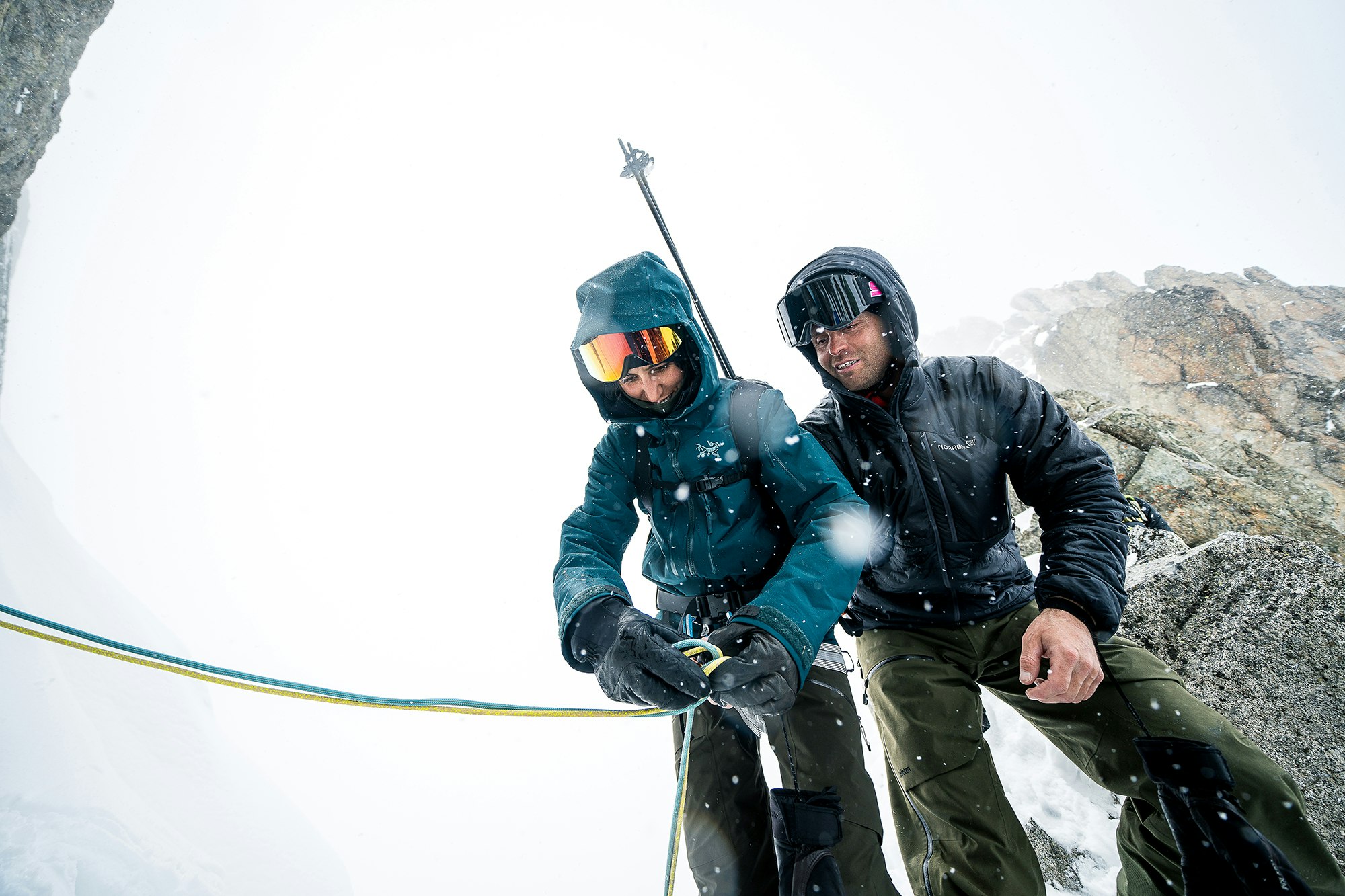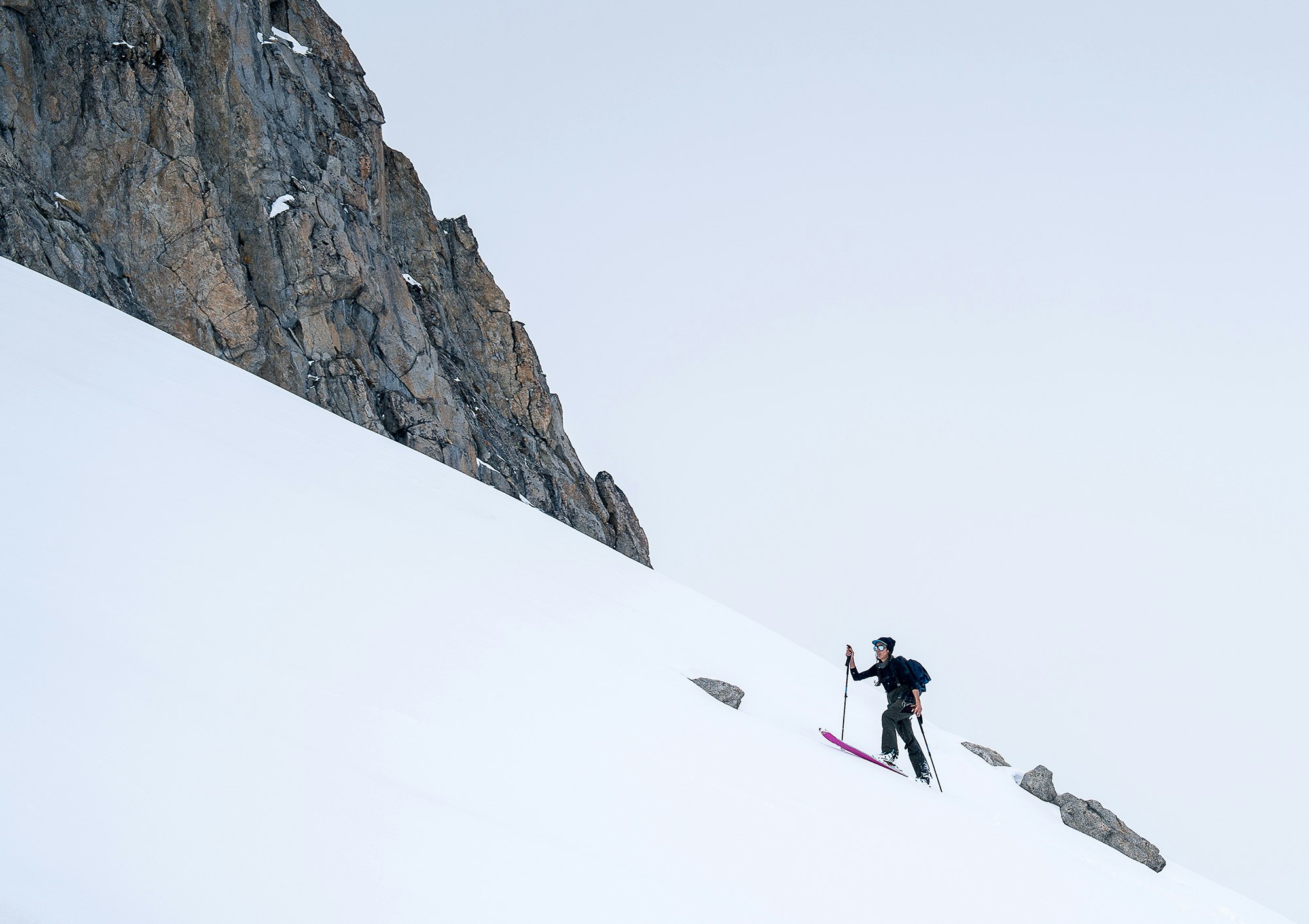The ladies skimo evolution
From fitness touring to ski mountaineering
- Author: Michele Guarneri
- Photographer: Giovanni Danieli
From fitness touring to ski mountaineering
Last year we categorized a portion of women’s skimo as climbing marked runs, a definition that worked for athletic or beginner tourers who were above all interested in safety, and also looking for an alternative to running in the winter or the gym.
Today those women have moved on, they’ve taken training courses and have enough experience under their belts to start heading off-piste. They still climb marked runs, but only if there’s no time for anything else. Tours include more than one transition, skis should be light and not too wide, while boots should provide good range of movement on the uphill, as well as performance in descent. Ski touring becomes ski mountaineering. Undaunted by crests and couloirs, their mastery of their equipment gives them the confidence to push themselves. The category has broadened to include both athletes focused on vertical and skiers looking for more challenges. The former stick to skinny skis, while the latter are looking for burlier equipment, without being put off by the weight.

Beginners, but not for long
Over the last few seasons we’ve seen lots of young women with a solid background in piste skiing take up their parents dilapidated equipment full of drill holes, complete with frame bindings and worn-out skins, and take their first steps on classic touring routes, first with more experienced friends, then on their own.
We’ve seen them gain in confidence on open terrain and in just a few months come to the realization that this is the way to experience the mountains, through earning your turns. Even if they do head back inbounds from time to time, it’s to try a trick or two, ski through the trees, or carve out some turns on groomers. They are the ones swelling the ranks of intermediate skiers who realize halfway through the season that they need more modern, versatile equipment that they can use anywhere, letting them relax and have fun. Lightweight yes, but compared to the equipment they were lugging around until very recently, 1400 g skis don’t faze them, likewise for boots: just as long as they’re easier to walk in than mom’s old Garmonts from the eighties. And if they can find a complete ski-boot-binding setup at a good price, even from the same brand, so much the better. Dynafit, Atomic and Salomon all stand out here.

Exploring further afield
The snow on our own mountains is becoming less reliable. Season after season, climate change is taking its toll, making it harder to enjoy the beauty of the Alps— save the occasional window of opportunity that you can make the most of, work and family commitments permitting.
Moving to more fertile ground, less affected by drought is fast becoming the only solution, and increasingly accessible thanks to tips found on social media. While Norway is a luxury not everyone can afford, there are lots of new, less expensive destinations. From the Balkans to Turkey, Georgia, Crete and Kyrgyzstan; there are plenty of destinations out there that cost a lot less than a week in the Alps. For this reason, there’s another category to add to the first two: the adventurers, those who choose to broaden their horizons looking for new terrain to conquer. While their day-to-day routine is similar to the first category, they complete their winter setup with a versatile ski suitable for all conditions, wide enough to float on powder, and sufficiently light to head from hut to hut for days on end without too much effort. A travelling ski, between 90 and 100 mm underfoot; a one-quiver classic touring ski. Paired with a boot that’s lightweight, but offers enough support to those who drive their skis hard.
Share this article

